How to grow pampas grass - new colors, new styles, and why it's suddenly cool again
Feathery pampas grass plumes are having a moment. It’s easy to see why as they make an eye catching focal point in any outdoor space

Once ubiquitous in the suburbs,, pampas grass is suddenly cool again. No, we didn't see it coming either. But it's being used to add height to borders, as part of the lazy, hazy wild grass trend, and it feels exactly right for now. Best of all, it’s easy to add to your outdoor space even if you’re a balcony gardener.
Like so much else, this is about taking an interior trend outside and all that Insta inspo featuring pampas plumes has fuelled demand. Easy to grow and the very definition of low maintenance, the best way to grow pampas grass is to buy it as a small plant.
Alternatively if you like a project try growing them from seed indoors. Spring is the time to do it but only if you’re the patient type. It can be five years before you get those must-have feathery plumes to grace your garden and snip for stylish indoor vase arrangements.
Once planted out this is one variety that spreads quickly and easily. In fact, it can be invasive and take over the garden if the conditions are right. Although dwarf varieties are available, most varieties will reach a height of 7 to 10 feet, so check the label for info before you buy. And be sure to plan ahead and allow enough space when you plant it out.
Or why not grow it in a pot if you're a balcony gardener or otherwise tight on space. It will add privacy if you're overlooked. And - the true reason it's now beloved for a modern garden - it comes in pink and purple colorways too. Ideal for if you're looking for something a little more flamboyant.
How to grow pampas grass
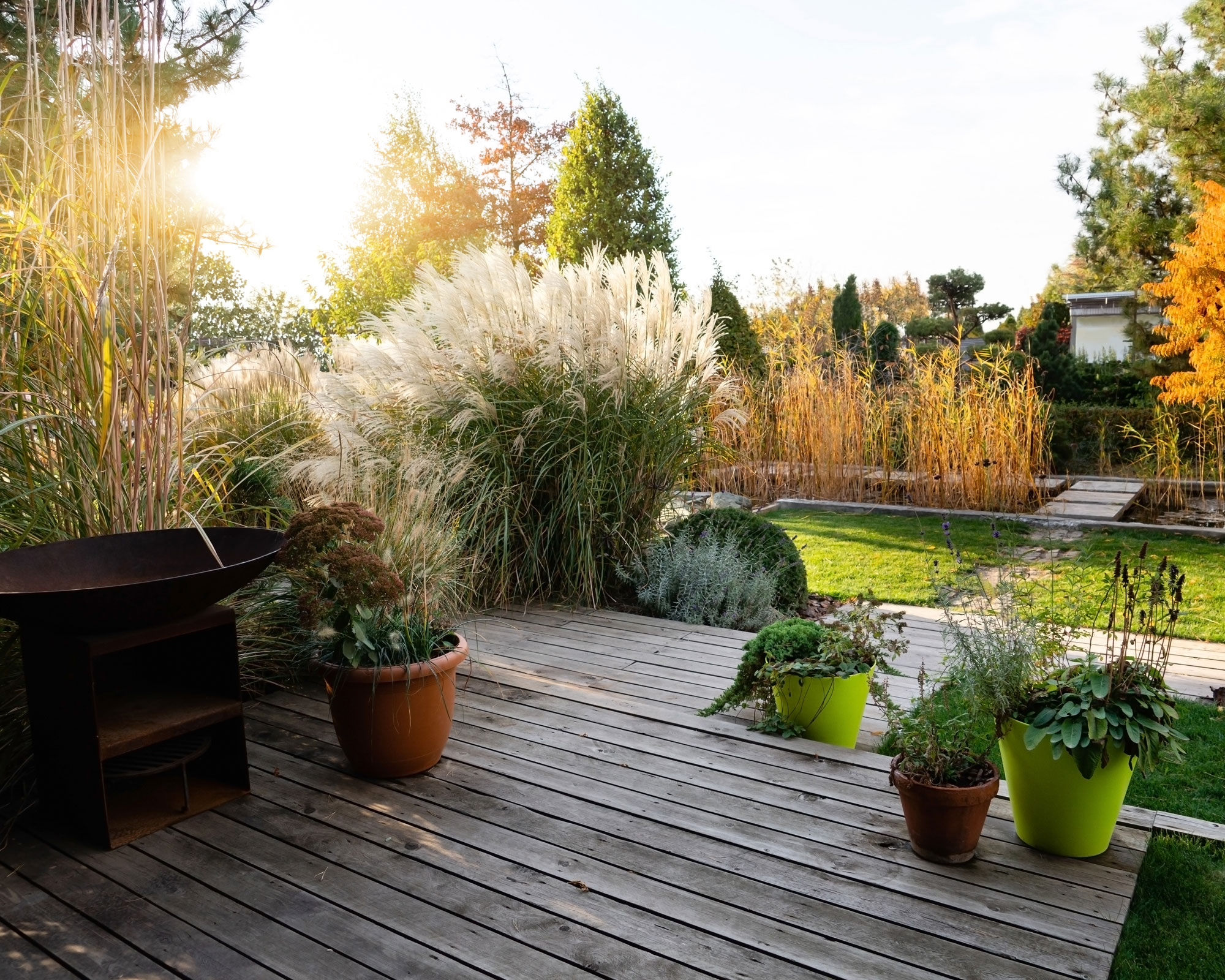
5 things you need to know about planting pampas
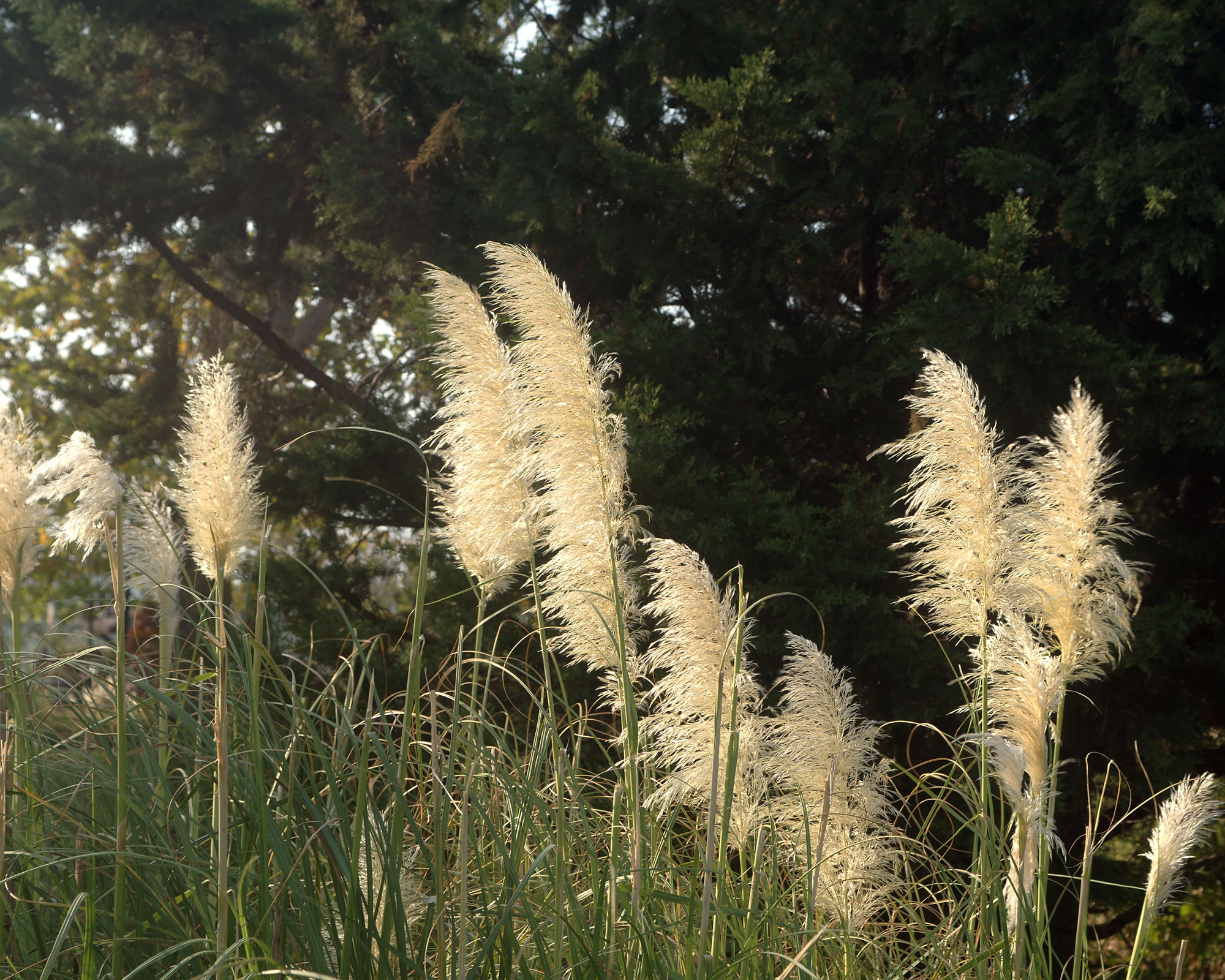
- A sunny spot is ideal, although pampas grass can grow in partial sun as well but it definitely won’t thrive in shade.
- Moist, well-draining soil that is rich in nutrients is key to growing pampas successfully. Pile on some compost to give the soil an extra boost and help drainage.
- When it comes to watering, natural rainfall is all your pampas requires but new plants will need extra dousing while they settle in.
- Pampas grass thrives in hot climates, and loves in heat and high humidity. They’re also hardy, which means they're also okay with cold winters and even snow.
- If you want these fast-growing grasses to grow even faster, feed them in late winter or early spring to encourage new growth.
How easy is it to grow pampas grass?
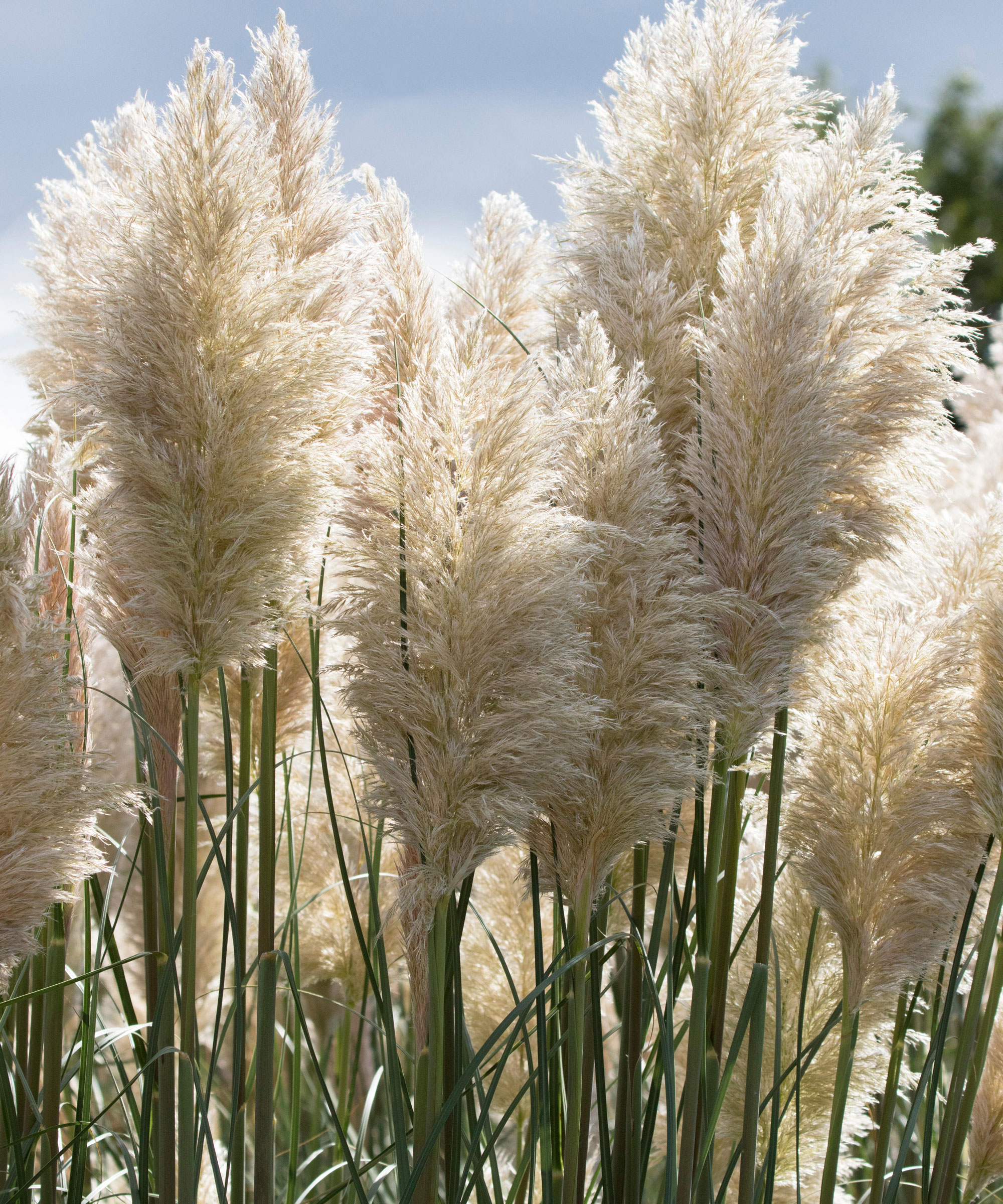
Pampas grass is so easy to grow it can quickly become rampant. Pampas grass is fast growing if you plant it in the right sunny spot and will spread if it has the space to do so. On the plus side, this makes it ideal for low maintenance gardens, as long as you keep an eye on it.
Hardy pampas grass is tolerant of wind, drought, and salt spray in coastal areas so it's a seaside special. It is also resistant to most diseases and pests.
The Livingetc newsletters are your inside source for what’s shaping interiors now - and what’s next. Discover trend forecasts, smart style ideas, and curated shopping inspiration that brings design to life. Subscribe today and stay ahead of the curve.
Pampas is a perennial grass, which means that it lies dormant during the winter months, and new growth occurs in early spring. By pruning any dead foliage to the ground in late winter or early spring, you will keep the way clear for new growth each season and keep your plant flourishing.
How do you keep pampas grass looking good?

If you're looking for a smart aesthetic, pampas grass is an good choice as this tall and graceful variety adds drama to the landscape. The good news is it doesn't need a lot of pampering. Once established pampas grass is low maintenance and only requires yearly pruning to keep it neat. If you keep on top of this annual trim the rest is easy.
All you really have to do is trim your pampas grass with shears in late winter or early spring to remove any dead foliage and allow the new shoots to spring up freely.
Pull out any old stems and dead plumes from the clump in your flower bed or lawn. Pampas grass is tough and has sharp edges so be sure to wear protective gloves for any pruning work or ‘combing’ out dead foliage.
Can you grow pampas grass from a cutting?

Once established pampas grass is one of those perennials that grows in large clumps that are easy to divide to get more plants rather than taking cuttings. One thing to note is that pampas grass dislikes being disturbed so be gentle with both the mother plant and new sections if you're planning to divide yours up.
Splitting a clump of pampas grass is work that's best done in early spring when you see the new growth appearing. Lift the clump carefully and split it into portions using a spade. If the roots are particularly tough and well established you might need a small axe to chop through them.
Cut the foliage back to a couple of inches and pot up each new section individually in fresh potting compost. Later in the year ease the plants out of the pots and check to see if roots are showing, then you can plant them out in the garden.
You can also plant your divisions straight in the ground but you’re likely to have more success if you pot them up first.
How do you revive a tired old clump of pampas grass?

Although pampas grass don't require much feeding generally, if yours is past its best it's a good idea to treat it to some plant food.
Add a general liquid fertilizer to the centre of the clump in spring after you’ve removed any faded old growth and dead sections. Feed your plant generously and this will be all that’s necessary to keep the clump in a neat condition.
Once you’ve nurtured your pampas grass back to health all you need to do is water it in dry weather and keep it free from weeds.
Can you grow pampas grass from seed?
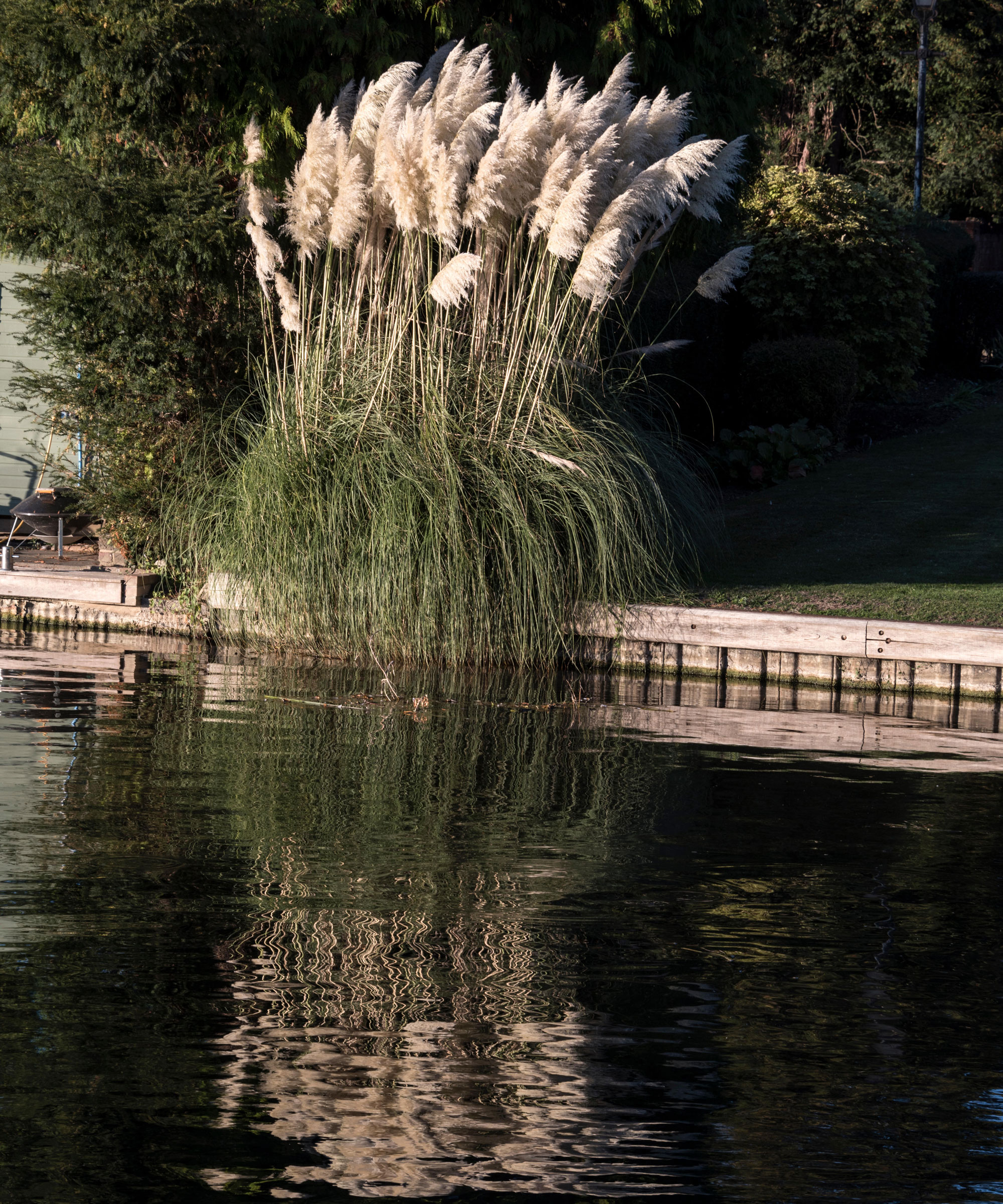
Ordinary pampas grass (cortaderia selloana is the correct botanical name) can be grown from seed but it will be several years before the young plants produce feathery plumes. The time taken very much depends on where you plant them and how well you look after them.
Sow the seeds thinly in a seed tray and as soon as they are large enough to handle plant two or three of them together in a small pot. Once thriving divide them up again into individual pots then transfer these into the garden and keep under cover during cold spells. They will be ready to plant in the ground the following spring.
Can pampas grass grow in pots?
Pampas grass can be grown in smaller garden spaces in a container, especially the dwarf varieties. So you can include it in your planting scheme if you have a balcony or terrace garden. Because of its size, it’s best to choose a large pot with plenty of room for growth. Use general multi-purpose compost but add some horticultural grit to the mix to help drainage.
When the pampas grass outgrows the container, move the plant into a larger pot. To do this, tip the grass onto its side and tap the outside of the pot until the roots come free. This is a good time to divide up the plant if you want more and plant up several.
Place the pampas grass into its new pot and fill it in with rich, well-draining soil. Whatever pot you choose, be sure there are drainage holes to prevent any standing water, which could lead to the roots going mouldy. Keep an eye on your pampas while it settles into its new home.
What is the best type of pampas grass to grow?

There are 25 different varieties of pampas grass in the popular Cortaderia selloana group. Among the most common is 'Gold Band', which has majestic white plumes and a dense crest of golden yellow flowers in late summer. It will eventually grow to 6 feet.
There is also a popular dwarf pampas grass called 'Pumila’. It's compact with striking white plumes that appear in late summer. This variety will grow up to about 7 feet tall. It’s perfect for growing with prairie-type flowers such as echinacea and Verbena bonariensis, as well as other ornamental grasses.
Can you get pink pampas grass?
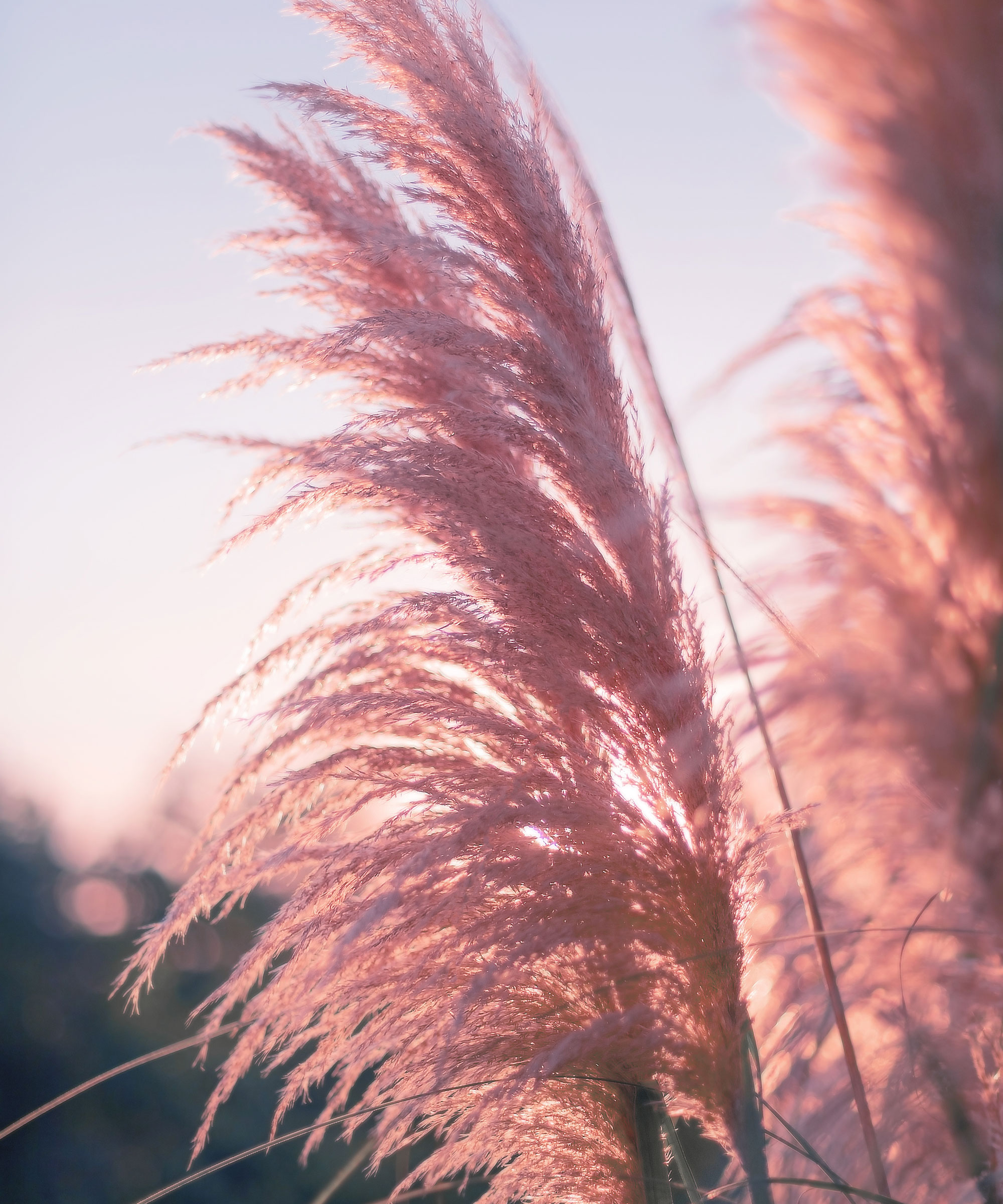
There are lots of varieties of pampas grass with stunning pink plumes to choose from. Look out for 'Pink Feather', ‘Rendatleri’ and 'Rosea'. The depth of color can be variable, ranging from a barely there slight pink tinge through soft rose tones to a more vibrant shade, so you're sure to find one to suit your scheme.
Look out for Cortaderia jubata too, also known as Andean or purple pampas grass, if you're after something more unusual. You need space for this one though as it can grow up to 20 feet.
How do you dry the plumes for decoration?

Dried flowers are having as much of a revival as pampas grass, and the two go hand in hand. Cut the stems when the plant is in bloom, usually in late summer. Choose a dry day, and don't pick if the plumes have any residual moisture on them from rain or dew.
Tie three or four stems together in a bunch with twine and make a loop for hanging. Hang upside down in a warm, dry space where the air can circulate. Leave for two to three weeks.
Once the plumes are dry, turn the grasses the right way up, fluff them out gently with your fingers or use a hair dryer on a low setting. Then arrange them in a tall vase or jug.
What's the best way to display pampas grass indoors?

As well as looking stunning in a display on their own, try mixing pampas grass with dried flowers and foliage in a tall vase for a contemporary look.
‘We’ve always loved using pampas especially when creating unstructured and asymmetric designs. It's as popular as it’s ever been,' says Helen Ellis, head of design at Shida. 'To amp up the volume and drama, our current take is to combine pampas grass with preserved flowers and foliage for a cool and modern edge.’
Lifestyle journalist Sarah Wilson writes about garden design and landscaping trends. She has studied introductory garden and landscape design, and also has an RHS Level 2 qualification in the Principles of Plant Growth and Development. She is a regular contributor to Livingetc.com, and also writes for Homes & Gardens, Country Living, Country Homes & Interiors, and Modern Gardens magazines. Her first job was at Elle magazine, during which time a trip to the beautiful La Colombe d'Or in St-Paul-de-Vence led to an interest in writing about all things botanical. Later as lifestyle editor at Country Homes & Interiors magazine one of the highlights were the run of captivating country gardens that were featured.